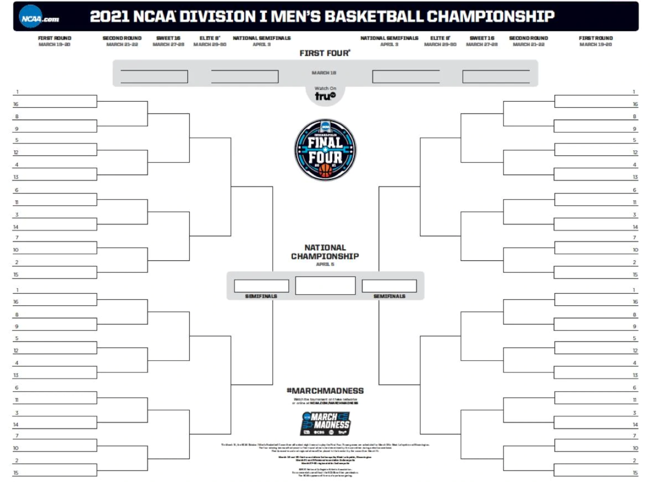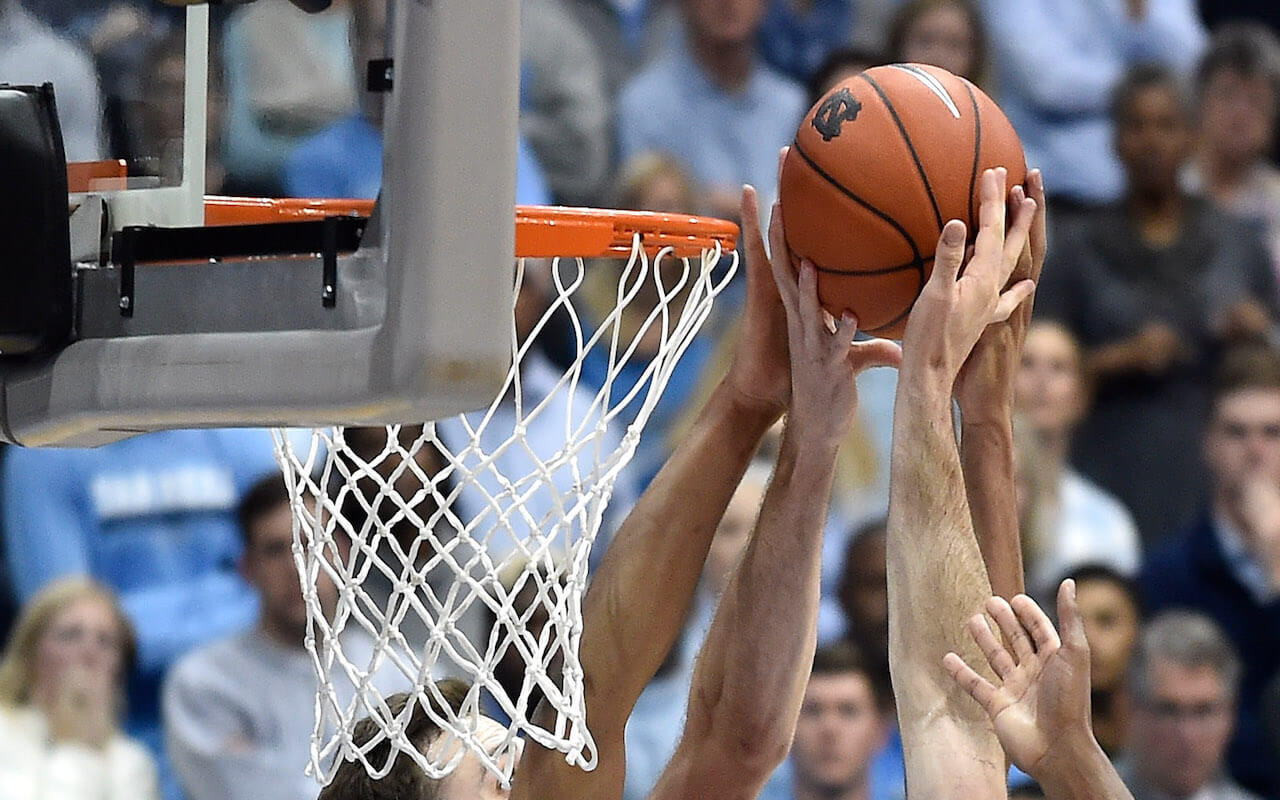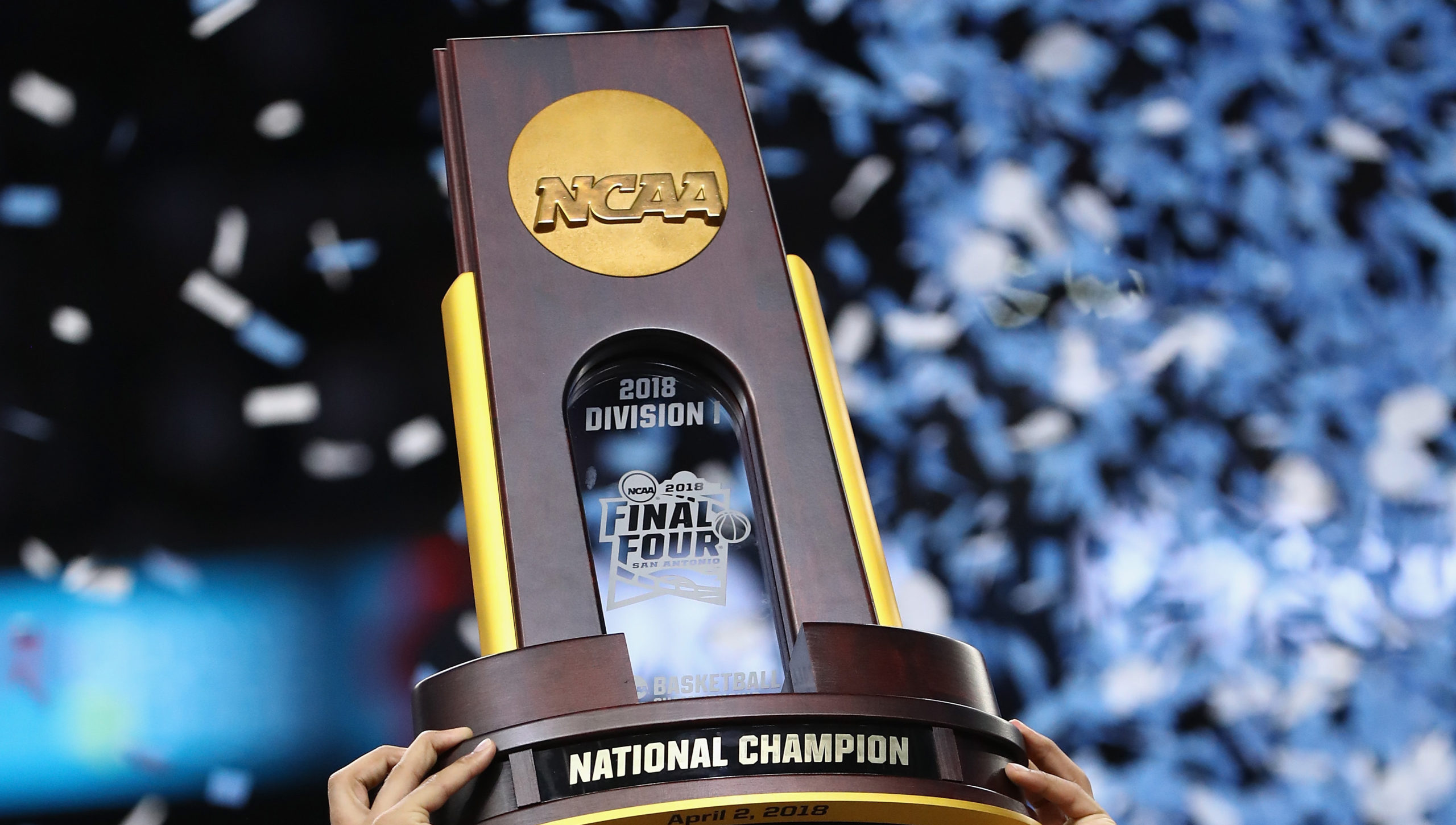How to Pick the Biggest March Madness Upsets

How to Pick the Biggest March Madness Upsets
Building the kind of bracket that will compete for the cash in a March Madness bracket contest means finding the key NCAA Tournament upsets.
Just having the top seed advance in every game won’t get it done. After all, all four No. 1 seeds have only made the Final Four together once in NCAA Tournament history. You’ve got to identify which top seeds are destined for a fall and which higher seeds are primed to make that improbable yet inevitable run.
Finding out where this year’s biggest upsets will be is more than half the March Madness betting battle. A quick dive into NCAA Men’s Basketball Tournament history will surely reveal where these upsets are most likely to be found.
How to pick first round upsets
You would think there would be a higher likelihood of more upsets in the First Round of the NCAA Tournament with the sheer number of games played. A look at the historical data for each matchup tells a bit of a different story.
You can leave the No. 8 vs. No. 9 (69-71) and No. 7 vs. No. 10 (85-52) games out of this discussion, as wins by No. 8 and No. 10 seeds can’t be considered big upsets. Plus, as you can see from the historical records in parentheses, they win close to 50% and 40% of the time respectively.
You should also ignore the No. 1 vs. No. 16 (139-1) and No. 2 vs. No. 15 (132-8) when looking for upsets to slot into your bracket. It’s not that these can’t be considered big upsets when they happen, it’s just that they are so unlikely to happen at all.
In 2018, UMBC beat Virginia, becoming the first and only No. 16 seed in history to win a first-round game. As you can see from the historical records in parentheses, that means No. 1 seeds enjoy a 99.29% First-Round winning percentage.
Plus, with only eight First-Round losses in NCAA Tournament history, No. 2 seeds enjoy an almost-as-healthy 94.29% First-Round winning percentage.
Related reading: 7 Dumb Ways to Bust Your March Madness Bracket
Related reading: How To Pick Your March Madness Bracket Using Vegas Odds
Related reading: The Best Way To Bet $50 On March Madness
Related reading: Guide To March Madness Prop Betting
Relating reading: March Madness Stats To Trust
Start looking for first round upsets here
While the chances of the No. 3 vs. No. 14 (119-21) and No. 4 vs. No. 13 (111-28) games producing an upset are greater, the lower seed still wins close to 85% and 80% of the time respectively. However, this is where you’ll want to start taking a closer look at the teams involved. A 15 to 20% winning percentage is palpable and a hot-playing No. 13 or No. 14 seed that matches up well with the No. 3 or No. 4 seed they’re playing could produce the upset you’re looking for.
After that, there’s a huge drop off in the lower seeded team’s winning percentage and you have discovered the two First Round matchups that historically produce more upsets than any others. In fact, the No. 5 vs. No. 12 (90-47) and No. 6 vs. No. 11 (88-51) games are where you should begin looking for upsets in the first place. That’s because, as the records show, the lower seed wins less than 65% of the time in each matchup.
How to pick second round upsets
No. 1 seeds still enjoy a healthy 86% winning percentage in the Second Round of the NCAA Men’s Division I Basketball Tournament. However, there’s a significant drop off in winning percentage for the other top seeds, suggesting the Second Round is where you should look for more big NCAA March Madness upsets, like the No. 2 and No. 3 seeds falling.
We can leave the No. 4 and No. 5 seeds out of this discussion because they are most likely to meet in the Second Round, and a win by either is not considered an upset.
In the meantime, historical NCAA Tournament data shows us No. 2 seeds are just 89-43 all-time in the Second Round. That’s a very beatable 67% winning percentage.
Twos and threes will fall
No. 2 seeds that advance to the Second Round play the
winner of the No. 7 vs. No. 10 First Round game.
- A #7 seed has beaten a #2 seed 25 times.
- A #10 seed has beaten a #2 seed 18 times.
That’s a total of 43 Second Round losses for No. 2 seeds in the 35 NCAA Tournaments since 1985 when the field was expanded to 64 teams. That’s an average of 1.2 Second Round losses for No. 2 seeds per year.
No. 3 seeds are just 74-45 all-time in the Second Round for an even-more-beatable 62% winning percentage. No. 3 seeds that advance to the Second Round play the winner of the No. 6 vs. No. 11 First Round game.
- A #6 seed has beaten a #3 seed 28 times.
- A #11 seed has beaten a #3 seed 17 times.
That’s a total of 45 Second Round losses for No. 3 seeds in the past 35 NCAA Tournaments, an average of 1.3 Second Round losses for No. 3 seeds per year.
Add it up and you should probably have at least one No. 2 seed and one No. 3 seed being upset in the Second Round on your bracket.
How to pick Sweet 16 upsets
No. 1 seeds in the Sweet 16 advance to the Elite Eight 81% of the time. A 97-23 all-time Sweet 16 record makes it hard to bet against the No. 1 seeds, but not impossible.
It’s even more likely No. 2 seeds and No. 3 seeds will fall here, but that probably won’t be considered an upset because this third NCAA Tournament round is where they are most likely to meet. Still, it’s worth noting the higher seed wins most often here, with No. 2 seeds enjoying a 72% Sweet 16 win percentage and No. 3 seeds just 49%.
If you’re looking for upsets in the Sweet 16, you should look at any No. 8 seeds there first.
No. 8 seeds enjoy an 8-5 record in Sweet 16 games, even though they’re almost always facing a lower seed. That’s a 62% winning percentage, a larger winning percentage than the No. 3 (49%) through No. 7 (37%) seeds.
It’s also worth noting No. 7 and No. 6 (33%) seeds enjoy a larger winning percentage in Sweet 16 games than No. 5 (19%) and No. 4 (32%) seeds.
This suggests higher seeds responsible for Second Round upset are more than capable of another win, even though lower seeds tend to win more often in the Sweet 16.
How to pick Elite Eight upsets
You can pretty much throw the seeding out the window in the Elite Eight. No team higher than a No. 12 seed has ever been there, and the one No. 12 seed that advanced that far did ultimately lose. That means the spread margin is rarely big enough for a win by the higher seed to be considered a huge upset, but there are Elite Eight upsets nonetheless.
The No. 11 to No. 1 seeds that have appeared in the Elite Eight enjoy almost an equal winning percentage. No. 1 seeds are just 57-40 all-time in the Elite Eight. That’s a 59% winning percentage. Meanwhile, No. 11 seeds are 4-4 for a 50% winning percentage.
Big or not, the Elite 8 is often a round filled with upsets. The No. 4, No. 5, and No. 8 seeds that get that far are almost always facing a lower-seeded team, yet they enjoy 62%, 78%, and 63% winning percentages respectively. Although, each has only been there a few times, with No. 4 seeds making 21 Elite Eight appearances, No. 5 seeds nine, and No. 8 seeds just eight.
Like the No. 1 and No. 11 seeds, No. 2 and No. 3 seeds in the Elite Eight win close to 50% of the time. However, the No. 7 (30%), No. 9 (25%), and No. 10 (13%) seeds certainly do not. This means if they get that far, their Cinderella story is very likely to end right there.
How to pick Final Four upsets
If you picked a higher seed to upset a lower seed in the Elite Eight, don’t be afraid to pick them to pull off another upset in the Final Four. Even the 57 No. 1 seeds that have made the Final Four have only gone on to the National Championship Game 34 times. That’s a beatable 60% winning percentage.
No. 8 seeds have an equal winning percentage in the Final Four and No. 3 and No. 6 seeds have even better winning percentages, at 65% and 67% respectively.
The Final Four is only two games, and it’s relatively rare to see a seed higher than No 4 even get that far, so don’t get carried away thinking it’s a round filled with upsets. Just don’t give up on a higher seed you picked to get there just yet.
Picking the National Championship game
Upsets are relatively rare in the National Championship game. No. 1 seeds get there more often than any other seeds and win 65% of those games. A number that’s skewed by the fact seven of the past 35 National Championship games have featured two No. 1 seeds.
The one thing you should be aware of is that the rare high seeds that have appeared in a National Championship Game have fared pretty well.
No. 6 seeds are 1-1, No. 7 seeds are 1-0, and No. 8 seeds, the highest ever to reach the National Championship Game, are 3-2.
Nothing suggests you should do anything other than having a No. 1 seed winning in your bracket. However, like the Final Four, if you have identified a higher-seeded team you think might make the National Championship game, you should strongly consider picking that team to pull off what has to be considered the holy grail of March Madness upsets to win it all.




 You can leave the No. 8 vs. No. 9 (69-71) and No. 7 vs. No. 10 (85-52) games out of this discussion, as wins by No. 8 and No. 10 seeds can’t be considered big upsets. Plus, as you can see from the historical records in parentheses, they win close to 50% and 40% of the time respectively.
You can leave the No. 8 vs. No. 9 (69-71) and No. 7 vs. No. 10 (85-52) games out of this discussion, as wins by No. 8 and No. 10 seeds can’t be considered big upsets. Plus, as you can see from the historical records in parentheses, they win close to 50% and 40% of the time respectively. We can leave the No. 4 and No. 5 seeds out of this discussion because they are most likely to meet in the Second Round, and a win by either is not considered an upset.
We can leave the No. 4 and No. 5 seeds out of this discussion because they are most likely to meet in the Second Round, and a win by either is not considered an upset.
